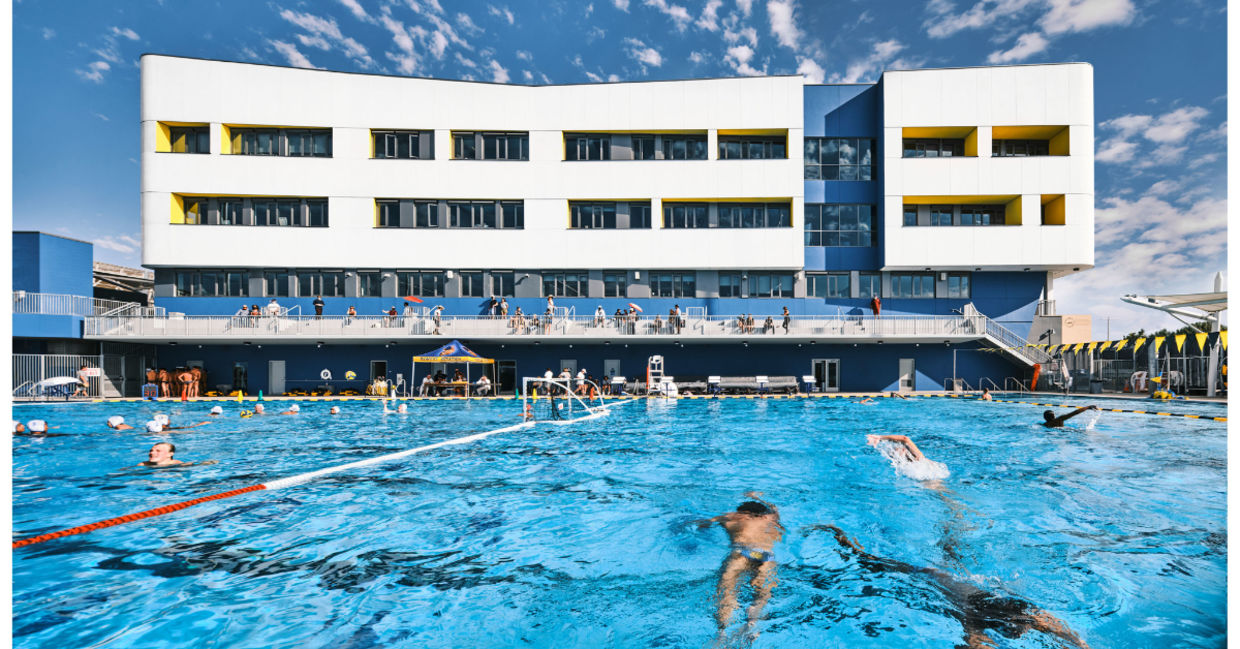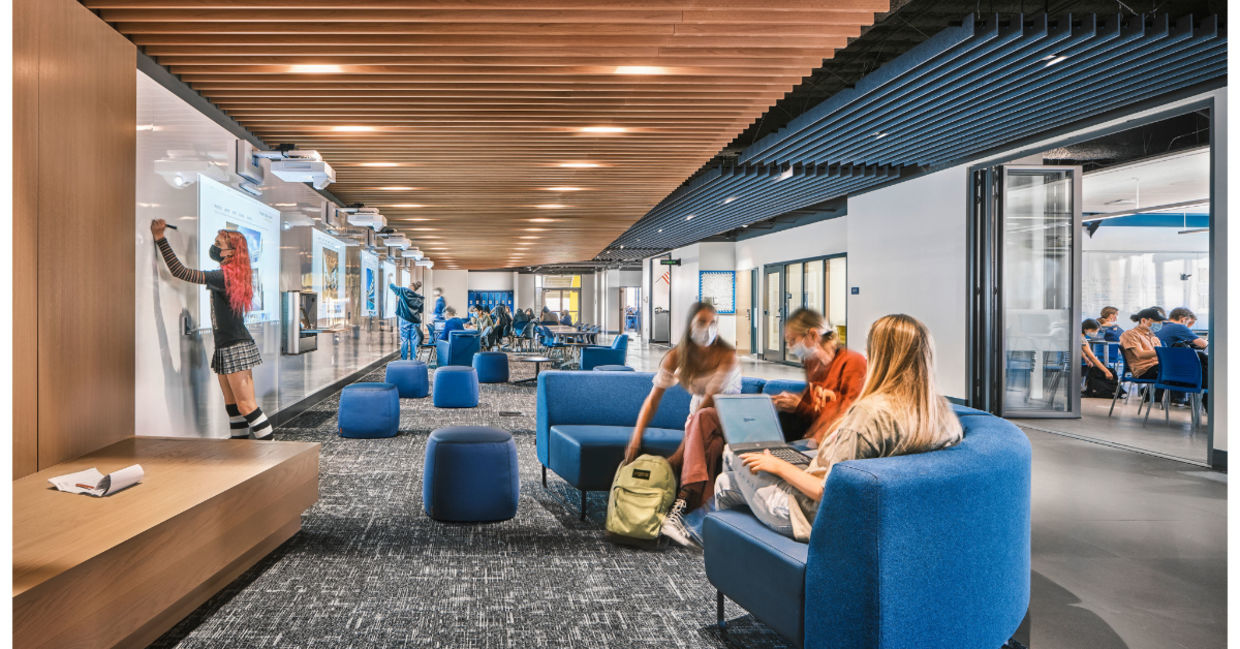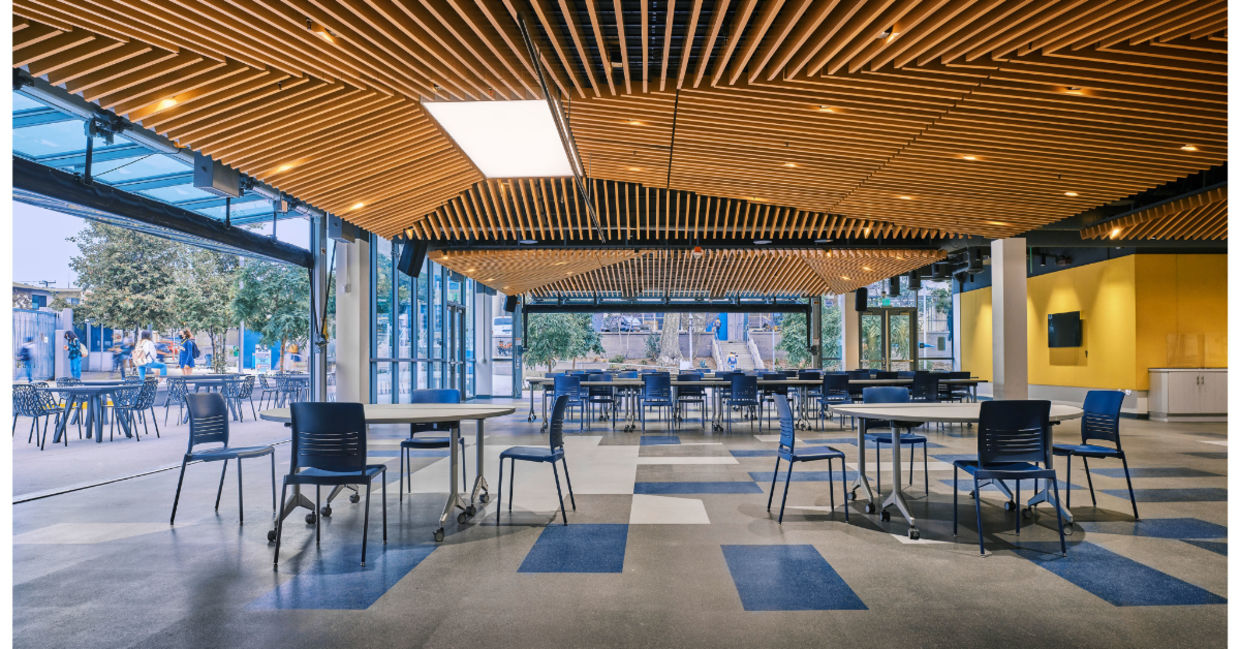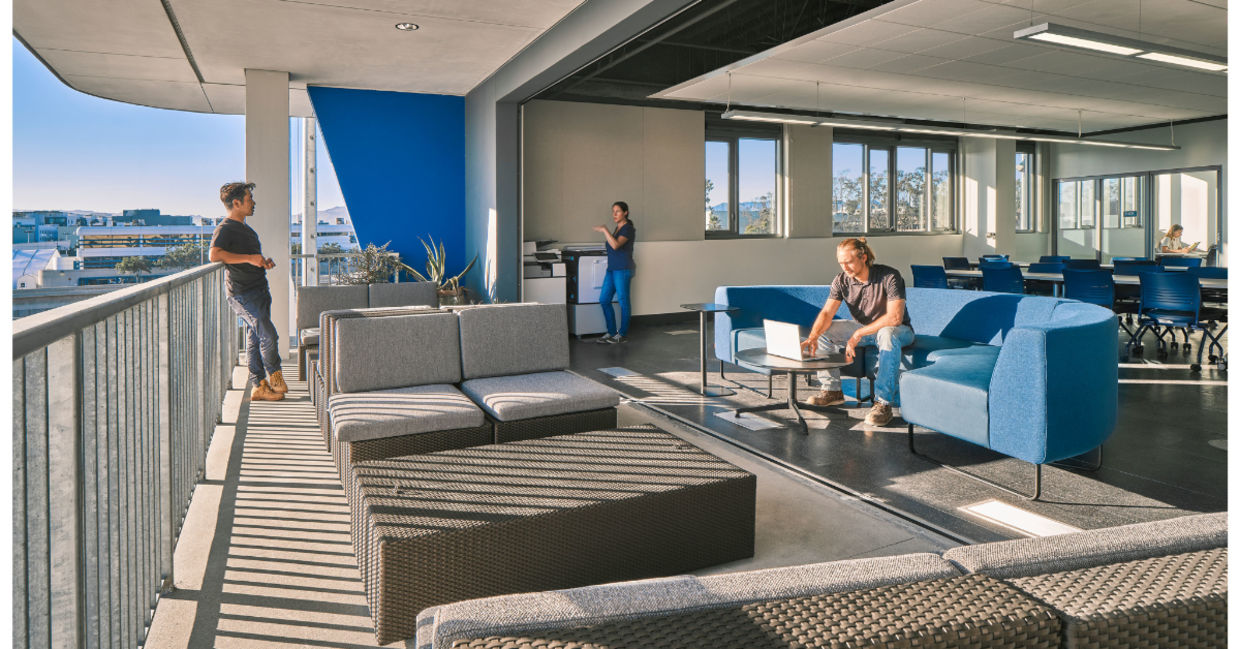
(Photo courtesy of Inessa Binenbaym)
Schools come in many shapes and sizes but follow a common theme of lockered hallways and rowed desks. One school, however, is breaking the mold by using alternative designs to not only offer a place to hold its students, books and amenities, but to accommodate new, student-friendly and collaborative ways of learning.
According to FastCompany news, Santa Monica High School in Southern California has welcomed its new Discovery Building this past fall, with the hopes that this novel school building will make a positive impact on its students.
Physical environments can positively impact learning
It’s no secret that the ongoing pandemic has challenged students, causing educators to re-examine their classrooms. One thing they discovered is that students who virtually attend school while at home had more control over their physical environments and this positively impacted their learning, according to a report by The Gazette.
That’s because some students may feel more comfortable sitting on a couch, others laying down and some prefer gathering at the kitchen table. Whichever it is, students like being able to choose their learning environment and that’s why some schools, like Santa Monica High School have begun adapting to this need.
For this forward-thinking Californian school, however, the idea for its innovative approach to school surroundings has its roots before the pandemic, back in 2017, when its leaders met with sustainable architecture firm HED, and architects Moore Ruble Yudell to discuss a new school building project.
“It’s become clear that schools need to be designed to accommodate long-range unknowns, as well as spatial needs that shift even over the course of an ordinary school day,” John Dale, principal architect of HED and cofounder of Open Building, a Dutch architectural initiative that advocates for adaptable and sustainable designs, told the Architectural Record.

(Photo courtesy of Inessa Binenbaym)
Santa Monica High School’s Discovery Building opens new pathways for students
Since the onset of the pandemic, the interest in offering more open spaces for friendly social distancing was accommodated in the designs of the new 260,000 square foot Samohi Discovery Building, which is already open and hosting a growing student population.
The U-shaped building has narrow corridors lending more space for classrooms and common areas. The classrooms are built with folding glass walls and moveable furniture to adapt to different sizes. The floors are designed with deeper floor plates giving more breathing room and ventilation indoors, according to FastCompany.
The building also has an aquatics center with an Olympic-size swimming pool that’s also open to the public, as well as cascading stairs that double as informal gathering spaces.
Additionally, due to the building's raised floors, external wiring and mechanics can be spread across the building, leaving room for a unique rooftop science classroom.
The school’s district representatives have been pleased with the results and admit that the ease with which students returned to in-person learning in their new Discovery Building was due to the new design, according to the Architectural Record.
“What we accomplished would not have been possible in our old building,” Carey Upton, chief operating officer of the Santa Monica-Malibu Unified School District, in Los Angeles County, told the magazine.

(Photo courtesy of Inessa Binenbaym)
A better environment for the students is also better for the environment
While the main aspect of open buildings is their agility, the designs are also better for the environment than standard structural designs. The remodeling of outdated spaces leads to demolishing and rebuilding. However, “The more we build things and take them down in short periods of time, the more we are imposing on the carbon load of this planet,” Dale, principal architect of HED told FastCompany.
Open buildings are more adaptable to change too. With very few confined spaces and great built-in flexibility, what might start as a school can transform into an office complex or an apartment building in the future, if needed.

(Photo courtesy of Inessa Binenbaym)






